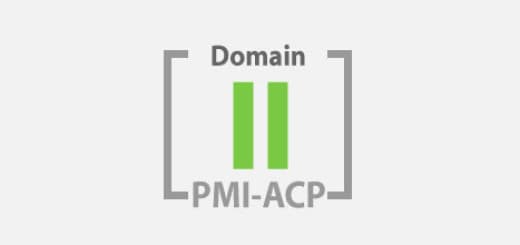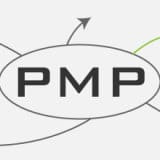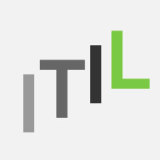PMI-ACP Knowledge And Skills: Level 2

[PMI-ACP® Exam Study Notes] Level 2 PMI-ACP® Knowledge And Skills group is one of the three Knowledge and Skills groups for the PMI-ACP® exam. The “Knowledge And Skills” accounts for a total of 50% of all the questions to be found on the exam paper. According to the PMI-ACP® exam content outline, Level 2 Knowledge and Skills includes 12 knowledge / skills.
PMI-ACP® Exam Importance: around 14 questions (~12% of all questions)
Article Highlights
PMI-ACP® Exam : Level 2 Knowledge And Skills
- 12 knowledge / skills (Level 2) for the PMI-ACP® Exam with around 0-2 questions on each knowledge / skills (in alphabetical order):
- Agile frameworks and terminology
- SCRUM
- meetings: Sprint Planning, Sprint Review, Sprint Retrospective, Daily Scrum
- roles: Product Owner (i/c product backlog), Scrum Master, Members (Developers)
- artifacts: Product Backlog, Sprint Backlog, Burn-down Charts
- characteristics: everything time-boxed, short sprint (= iteration) around 2-4 weeks, self-managing team, potentially shippable increments
- Extreme Programming (XP)
- meetings: Release Planning, Iteration Planning, Daily Stand Up
- roles: Tracker, Customer, Programmer, Coach, Manager, Tester
- artifacts: Vision, User Story, Customer Test, Release Plan, Metaphor (System of Names), Iteration Plan, Coding Standard, Unit Test, Production Code, Build
- values: simplicity, communication, feedback, courage
- key practices: planning game, small releases, customer acceptance tests, simple design, pair programming, test-driven development, refactoring, continuous integration, collective code ownership, coding standards, system metaphor and sustainable pace
- characteristics: disciplined, frequent interval around 1-3 weeks, for software only
- Lean Software Development
- artifacts: Kanban Board
- principles: eliminating waste, amplifying learning (continuous improvement), deferring commitment, delivering fast, respecting people / empowering the team, building quality in, optimizing the whole
- characteristics: focus on value stream, just-in-time, work-in-process (WIP) limits
- Dynamic Systems Development Method (DSDM)
- for planning, managing, executing, and scaling agile and iterative software development projects
- “fitness for business purpose” as the primary criteria for delivery and acceptance
- 80% of the system that can be deployed in 20% of the time
- Feature Driven Development (FDD)
- model-driven, short iterations, design by feature – build by feature, features need to be “useful in the eyes of the client”
- Crystal
- lightweight, adaptable, a family of methodologies to be tailored based on team size, system criticality and project priorities
- SCRUM
- Building high-performance teams
- a team is “a small number of people with complementary skills who are committed to a common purpose, performance goals and approach for which they hold themselves mutually accountable” ~Jon Katzenbach and Douglas Smith
- establish the team – vision, mission, values, goals, ground rules
- maximize performance by
- clear and realistic goals
- building trust
- open and honest communication – even in case of disputes or conflicts
- taking ownership, empowered, self-organizing
- coaching and mentoring
- choose teammates with complementary skills to perform all tasks
- sense of belonging (identity)
- limiting each team to have 12 members or below, break down the team if needed
- make decisions through consensus (participatory decision model)
- full-time, dedicated members
- low performing teams are:
- absence of trust
- fear of conflict
- lack of commitment
- avoidance of accountability
- inattention to results
- Business case development
- to justify the project for the resources and capital investment
- includes: high-level requirements, resource needs, funding sources, timeline, risks and opportunities, expected returns (early benefits realization opportunities), assumptions and recommendations, etc.
- states values in terms of IRR, ROI, NPV, etc.
- Co-location (geographic proximity)/distributed teams
- co-location: ideal for team communication and performance
- Caves and common
- caves – private spaces for private calls or quiet time
- common – the common space to work together
- Osmotic Communication
- pick up on things unintentionally through overhearing others’ conversations
- Tacit Knowledge
- tacit knowledge is unwritten collective group knowledge
- since documentations are not encouraged, co-located teams can share tacit knowledge more readily
- Caves and common
- distributed teams:
- distributed teams making use of Agile project management have greater chance of success owing to the nature of Agile projects (e.g. close collaboration, short iterations)
- meet in person face-to-face at least at the kick-off of the project (better also for the first and second iterations)
- tools that helps communication
- make use of video conferencing (webcams)
- interactive whiteboards
- web-based collaboration
- pull-based information sharing websites (wikis)
- instant messaging / chat for effective communication
- maintain a metaphor of the project / goal
- intensify facilitation through asking more questions, repeating others’ views, etc.
- co-location: ideal for team communication and performance
- Continuous improvement processes
- processes are continually evaluated (with feedback from process/team) and improved for performance / value gains (to reduce wastes)
- an ongoing approach to enhance project output / approach
- continuous process improvement – plan, develop, evaluate, learn
- continuous product improvement – review and improve the product incrementally
- responsible by the whole team
- Elements of a project charter for an Agile project
- the 1st document for the project
- a formal document to authorize the official kickoff of the project with barely sufficient information
- Background, objectives, vision (why) and mission (what), stakeholders of the project
- Preliminary direction, scope
- High-level budget, timeline
- High-level risk and constraints
- Communication plan
- Success criteria
- Agile charters address more about the “How” instead of “What” of the project
- can make use of the Project Elevator Statement
- For – (target customers)
- who – (need to do what)
- , the – (product / service)
- is a – (product category)
- that – (key benefits)
- . Unlike – (competitive products)
- , we – (primary differentiation)
- progressive elaborated
- Facilitation methods
- used to run effective workshops and meetings
- need to establish goals, rules, timing and assist all participants to have equal opportunities to voice their opinion
- Participatory decision models
- encourage / empower team members to participate in organizational decision-making process
- trying to reach a consensus rather than imposing a top-down decision
- Agile encourages team / stakeholder participation in decision making by
- simple voting
- thumbs up / down / sideways
- Jim Highsmith’s Decision Spectrum – express feeling of a decision on a spectrum ranging from “in favour”, “OK with reservation” to “veto” to help them express their concerns / feelings
- fist-of-five voting – give 1 to 5 fingers (1 – totally support, 5 – object completely)
- PMI’s Code of Ethics and Professional Conduct
- emphasizes on responsibility, respect, fairness and honesty
- around 1 – 2 questions on the PMI-ACP® Exam
- Process analysis techniques
- a process is a series of actions or steps taken in order to turn certain inputs into particular outputs
- process analysis is to closely study the process actions to improve performance and eliminate wastes and bottlenecks by making use of process mapping tools
- closely related to process tailoring and principles of system thinking
- Self assessment
- self assessment is the continuous improvement process on the people (individual and team)
- through self assessment, rooms for improvement are identified and action plans are created to implement them
- Tabaka’s model for high-performing team
- self-organization
- empowered to make decision
- belief in vision and success
- committed team
- trust each other
- participatory decision making
- consensus-driven
- construction disagreement
- Tabaka’s model for high-performing team
- Value-based analysis
- Agile projects emphasize on early delivery of value
- Agile project, processes, backlog/feature priorities can be analyzed and compared based on the net value generated
- affects every aspect of project decisions / processes
- Agile frameworks and terminology
Summary: PMI-ACP® Exam Level 2 Knowledge And Skills
This PMI-ACP® Exam Study notes covers 12 knowledge and skills from the Level 2 group of Knowledge and Skills for the PMI-ACP® exam syllabus. This group is less important for the PMI-ACP® exam as it accounts for 12% of all the exam questions. Agile frameworks and terminology should be the emphasis here.
Most Popular PMI-ACP Certification Articles
- Top 10 Tips to Prepare for the exam (I got all Proficient in my exam)
- How to Get 21 Contact Hours?
- Over 600+ FREE Quality Mock Exam / Practice Questions





 Hi, my name is Edward Chung, PMP, PMI-ACP®, ITIL® Foundation. Like most of us, I am a working professional pursuing career advancements through Certifications. As I am having a full-time job and a family with 3 kids, I need to pursue professional certifications in the most effective way (i.e. with the least amount of time). I share my exam tips here in the hope of helping fellow Certification aspirants!
Hi, my name is Edward Chung, PMP, PMI-ACP®, ITIL® Foundation. Like most of us, I am a working professional pursuing career advancements through Certifications. As I am having a full-time job and a family with 3 kids, I need to pursue professional certifications in the most effective way (i.e. with the least amount of time). I share my exam tips here in the hope of helping fellow Certification aspirants!





